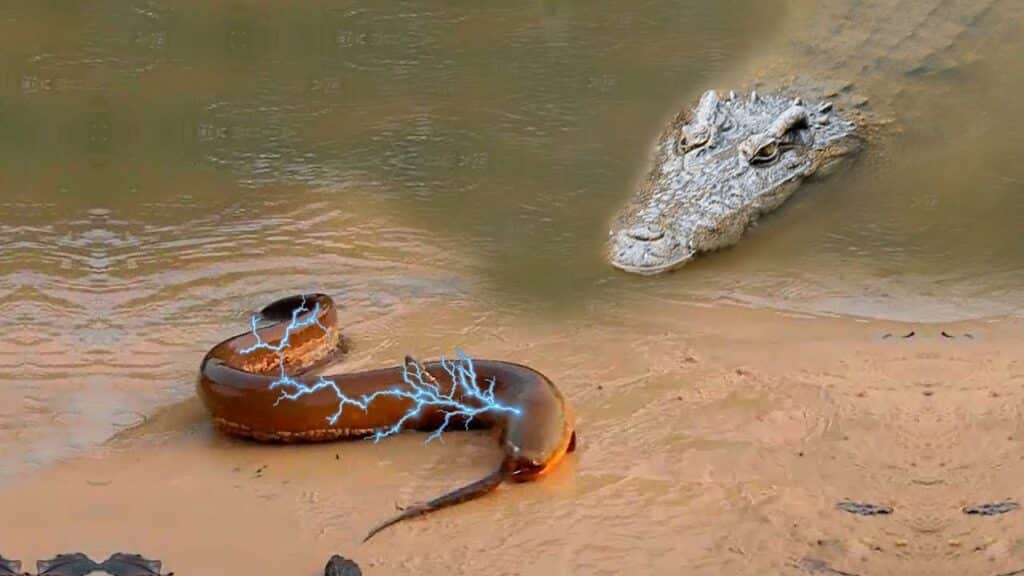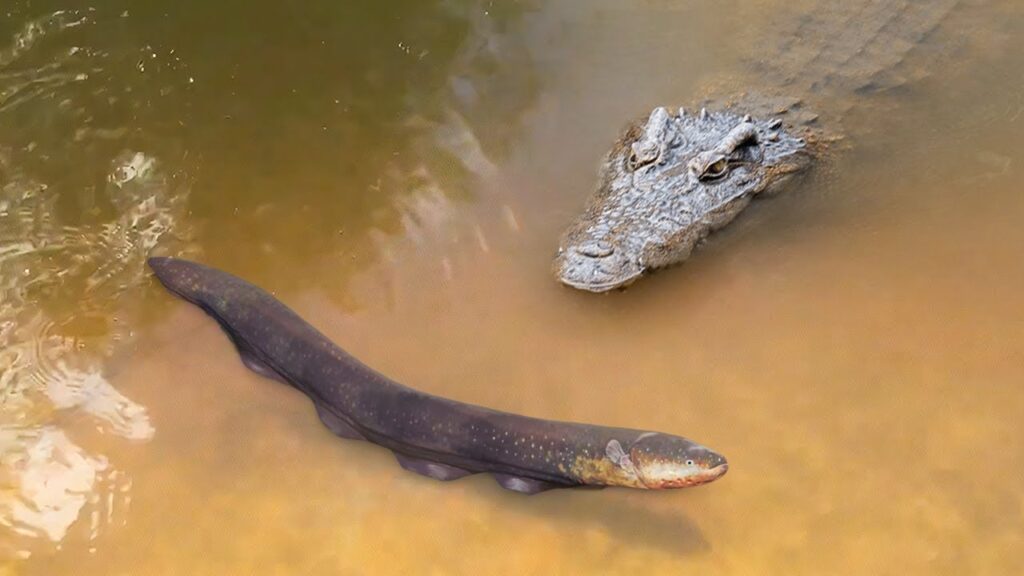Crocodiles are well-known for their aggression and impressive characteristics, however, a particular crocodile’s recent confrontation with an electric eel is truly remarkable. Demonstrating immense courage, the crocodile engaged in a face-off with an 860-volt electric eel and emerged triumphant. This article aims to delve into the specifics of this extraordinary incident, examining the potential hazards posed by electric eels, as well as the anatomical and behavioral traits of crocodiles that empower them to confront such perilous adversaries.
In the Amazon basin, an incident took place involving a sizable crocodile that was seen attacking an electric eel. Renowned for its ability to discharge high-voltage shocks, the eel is widely regarded as one of the most formidable predators in aquatic environments. Surprisingly, the crocodile showed no signs of being deterred by the potential danger and proceeded to launch a lethal assault. With swift and decisive movements, the crocodile successfully subdued the eel, ultimately leading to its demise.
Electric eels possess an intriguing characteristic of being able to generate electricity. These creatures possess three sets of abdominal organs called electrocytes, which are responsible for producing an electric charge. This charge can reach an impressive 860 volts, demonstrating its capability to immobilize or even eliminate prey.

Electric eels have the capability to deliver a powerful electric shock to their prey, rendering them dangerous predators. These shocks can lead to muscle contractions, heart failure, and in some cases, paralysis. While electric eels are typically not hostile towards humans, accidental encounters can have fatal consequences.
Crocodiles are widely known for their predatory behavior and are regarded as one of the most perilous creatures on the planet. These reptiles possess an incredibly strong jaw that can apply tremendous force, enabling them to crush bones effortlessly. Additionally, crocodiles possess a remarkable skill of holding their breath for prolonged durations, enabling them to remain submerged for up to two hours.

Crocodiles are well-known for their ability to capture daring prey. From large mammals to other predators, crocodiles have the capability to seize almost anything. With their powerful jaws and incredibly quick reflexes, they prove to be a formidable adversary for any predator.
Crocodiles serve a crucial function in the ecosystem, acting as both hunters and hunted. As top predators, they play a significant role in maintaining the balance of different species populations, thus ensuring ecological stability. Additionally, crocodiles actively contribute to the overall health of the ecosystem by removing diseased and weak individuals from the population.

Crocodiles present a multitude of risks, such as the loss of their natural habitats, illegal hunting, and the impact of climate change. These elements have resulted in a global decrease in crocodile numbers. However, efforts are currently underway to establish conservation measures that will protect these remarkable creatures and guarantee their existence for future generations.
To summarize, the recent interaction between a crocodile and an electric eel showcases bravery and aggression. Even though electric eels are formidable predators, crocodiles possess the physical attributes and instincts to prevail over them. Crocodiles are essential to the ecosystem and should be protected from the various dangers they face.





